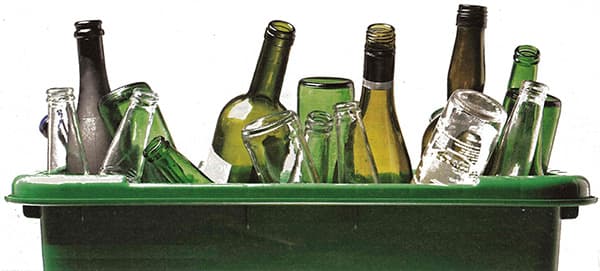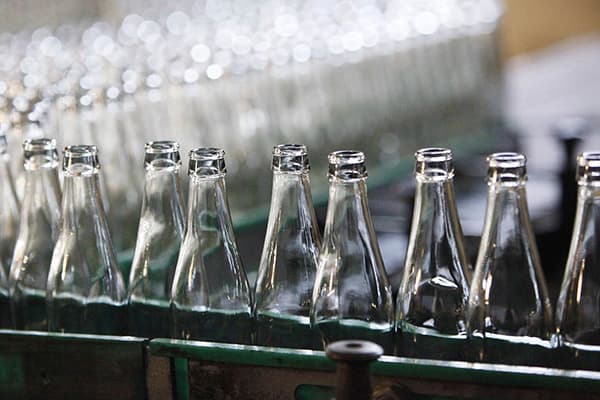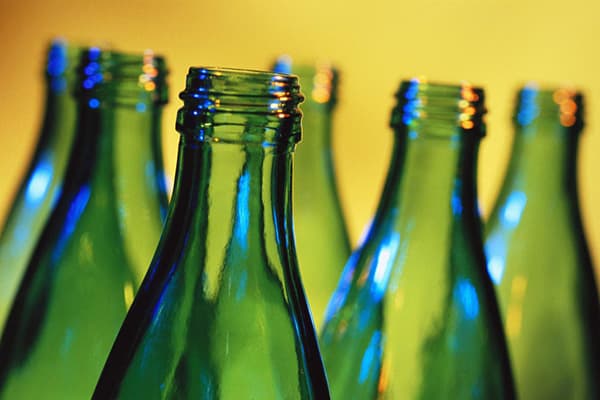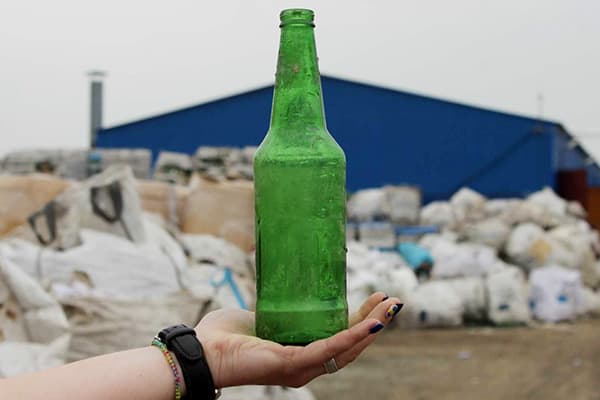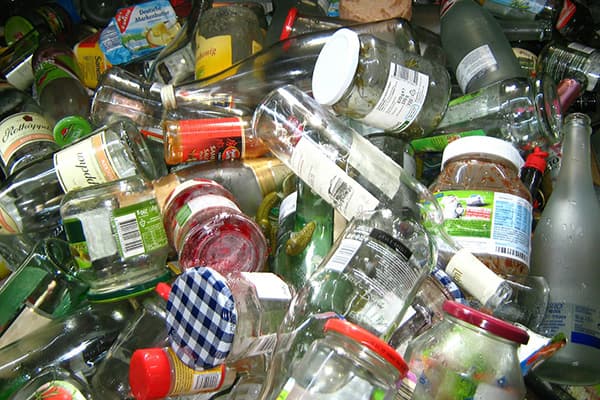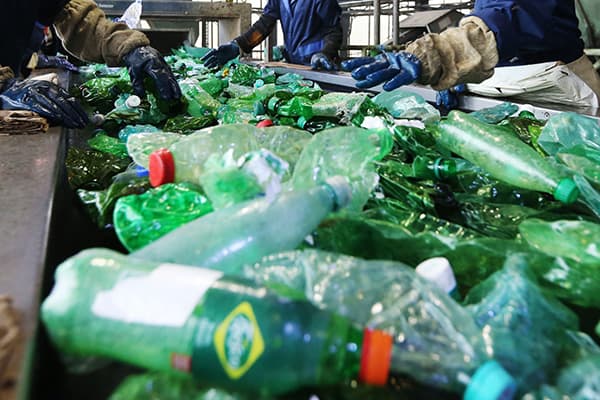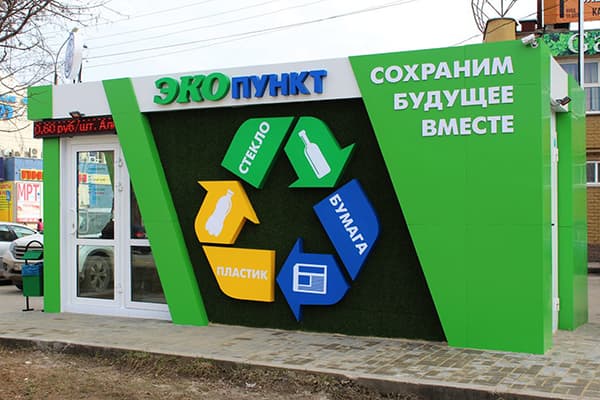What bottles can be returned to a glass container collection point?
Content:
The multiple use of resources is an important direction in the development of modern culture and technology. Today, many people know that empty glass bottles are accepted at glass containers at points, but not everyone understands the rules of reception. We will find out what norms apply to the accepted glass and plastic, where the collected containers then go and whether it is possible to get rich by handing over the bottles for reuse.
Glass or glass containers: what is the difference?
Glass bottles were received in the USSR in accordance with the concept of “collateral value”. By purchasing a liter bottle of lemonade at the store for 25 kopecks, the buyer paid only 5 kopecks for lemonade. The rest of the price was the collateral value of the bottle. Returning her to the glass container collection point, the buyer returned 20 kopecks.
This mechanism stimulated the population to handle glass containers carefully, collect them and hand them in regularly for reuse. The containers collected through collection points passed through industrial washing lines and were used again. Each bottle could last several years, after going through many cycles.
Today, glass reception is carried out according to two schemes:
- Reception of glass for recycling. This scheme involves the processing of the bottle into cullet. Then the broken glass is melted and new glass products are made from the resulting mass. This is a more costly method of processing, so the amount issued for each unit of delivered dishes will be small. However, the delivered packaging may be of any shape or condition (chipped and cracked bottles are also processed).
- Reception of returnable packaging. In this case, the bottle is not re-melted, but only washed out from dirt and disinfected. Then it re-enters the bottling line. The main drawback of such a scheme is the difficulty with logistics. If each manufacturer uses their own dishware standard, shipping bottles for reuse becomes too expensive and difficult.
The scheme for the use of negotiable packaging sold with collateral value works in Finland, Denmark, Germany, Luxembourg. These countries have stringent packaging standards that greatly facilitate the collection, sterilization and delivery of bottles to manufacturers.
In the summer of 2019, Dmitry Medvedev instructed three interested departments (the Ministry of Economic Development, the Ministry of Industry and Trade and the Ministry of Natural Resources) to work out options for the implementation of trade using negotiable packaging and the concept of collateral value. However, in most cases, the reception of glass bottles today occurs only for subsequent processing.
Requirements for Accepted Glass Products
In order for glass containers to be reused after minor disinfection, they must meet sufficiently stringent requirements.
5 essential conditions:
- No cracks, chips or other defects.
- Clean external and internal surfaces.
- The labels are completely removed, as well as the glue from them.
- Each box contains containers of only one type (volume, size, shape, color of glass).
- The willingness of enterprises to purchase this type of packaging for bottling products.The last factor is often leading in the matter of pricing: after all, not a single item will accept glassware, which then will not be able to hand in profitably.
In addition, reusable products must bear the GL70 mark. Without this marking, glass receiving points will refuse to buy a bottle from the collector. The lack of labeling indicates that the dishes are not designed for sterilization. Also, bottles with an original design are often not accepted: only the manufacturer is ready to buy them, and delivery will not always be profitable.
Varieties of bottles used as returnable packaging
The use of recycled packaging is fraught with benefits for the manufacturer: it is several times cheaper to buy a bottle from an assembly plant than from a manufacturer. Therefore, many factories producing and bottling milk, strong alcohol, beer, wine, carbonated drinks, encourage the organization of collection points for glass containers.
Collect bottles with a volume of 0.33 liters to 0.75 liters. Containers are divided into categories according to different criteria:
- Volume. This is 0.33 liters, 0.5 liters, 0.75 liters. Other categories are extremely rare, since it is difficult to collect them in a large enough quantity for delivery to the final customer.
- Destination The dishes are divided into wine, vodka, beer bottles, as well as champagne. Non-standard bottles (for example, flat cognac and whiskey containers) are not picked up by most collection points, since they are sold much less and it is difficult to quickly form a batch for shipment to the factory.
- Colour. At the collection points, dishes are sorted into products made of colorless, green and brown glass. The last two groups are more in demand: they are willingly purchased by beer factories. Other colors for reuse are not accepted.
Other categories of glass bottles are accepted only as a glass battle or not accepted at all. Reception of glass battle is fraught with additional difficulties: the need for additional equipment and the cost of remelting. In combination with the low price of secondary raw materials, these factors make the collection of glass combat an enterprise with low profitability.
Banks and other glass objects
Glass jars used in canning are a popular type of recycled packaging. They are willingly bought by factories involved in the processing of agricultural products. In addition, such dishes are actively purchased by the population directly at collection points (especially during the summer harvest season). Therefore, banks accept at a higher price.
The following categories are most demanded:
- 3 l This volume is intended for preserving juices, pickles.
- 2 l Also in demand among gardeners and at enterprises that make canned vegetables.
- 1 liter vs 0.5 liter They are popular in the production of jams, preserves, vegetable stews, squash caviar.
- 0.25 liters It got the name “mayonnaise”, as it used to be used for packaging this sauce. Today, jars of this volume are packed with various sauces and canned fruits.
Other categories of glass jars are much less in demand. So, in most cases, points refuse to accept small jars of tomato paste, adjika, mustard, horseradish (or take such dishes only as a glass fight). This is due to great difficulties in transportation and difficulties in the formation of parties due to the wide variety of standards.
Sanitary regulations prohibit the reuse of baby food jars. Therefore, such glass containers can only be thrown away (or seek her use in the household).
Medical items (penicillin vials, potions, eye drops, saline, etc.) do not take prefabricated items in most cases. However, pharmacies that produce such dosage forms often feel the need for such containers and will readily accept pharmaceutical vials and jars.
Features of recycling plastic bottles
Plastic bottles are also taken for recycling. However, there is a certain specificity in their use:
- Plastic can not stand most of the means of radical disinfection. It deforms from temperature, and from radiation it becomes cloudy and becomes brittle. Therefore, bottles of polymers are not used in the form of recycled containers, but are only recycled.
- Transportation of plastic recycled materials is substantially difficult. Each bottle takes up a lot of space, while containing a very small amount of material. Therefore, before delivery, such bottles must be flattened carefully.
- There are many types of plastic, and the process of processing each of them is specific. Therefore, the collected secondary raw materials should be carefully sorted into groups.
To determine the suitability of plastic for processing and the material from which the bottle is made, marking in the form of a figure enclosed in a triangle of arrows will help. The signs "1", "2", "4", "5", "6" indicate that plastic can be recycled, but most often only the first two categories are accepted. The brand “3” and “7” indicates that such plastic is not processed in our country.
Often the lid is made of another material, so the lids and bottles are handed over separately for recycling. There is also a situation where it is caps that are used for reuse, not bottles.
Disposal requirements for plastic bottles
For plastic bottles to be accepted at a collection point for recycled materials, they must be carefully prepared for delivery. Here is the algorithm for such preparation:
- Thoroughly wash the bottle of contents and any contaminants.
- Remove the cover and retaining ring.
- Completely wash the label and glue marks from the bottle.
- Sort bottles and caps by material.
- Crumple the bottle so that as little air as possible remains inside.
Such thorough preparation requires a lot of time and labor. In combination with the low cost of the bottle, the collection of plastic raw materials, unfortunately, is often an occupation with minimal profitability. Fortunately, in large cities this situation is gradually improving thanks to support from the state, business and non-profit organizations.
Why is it necessary to assemble glass and plastic?
The collection and reuse of glass allows you to save natural resources: sand, soda and other material components spent on the manufacture of bottle glass. In addition, glass melting is a process requiring high energy costs (in our country, natural gas plays this role). Plastic production also consumes the most valuable types of hydrocarbons: oil, natural gas, coal.
All of these types of raw materials are classified as non-renewable resources, so the reuse of glass is the key to resource security in the future. Attention to recycling is inextricably linked to the development of environmental thinking.
Of considerable importance is the economic aspect. The cost of manufacturing a new bottle is 2–3 times higher than the cost of processing, and 5–10 times higher than the cost of using recycled packaging. The widespread introduction of processing processes can improve the economy and create new jobs.
While the rate of processing and reuse of glass in our country is depressingly low. According to FEVE (European Container Glass Federation), in 2013 only 13% of the glass that went on sale was processed in Russia. And in Denmark, Sweden, Luxembourg at least 95% of bottles and cans sold in stores are processed!
Despite temporary difficulties, the processing of glass battles and plastic bottles, as well as the use of recycled containers, are trends without which the modern economy cannot be imagined. Today, everyone can help the planet, while becoming richer not only spiritually, but also materially. For the sake of this, it’s worth trying, isn't it?
